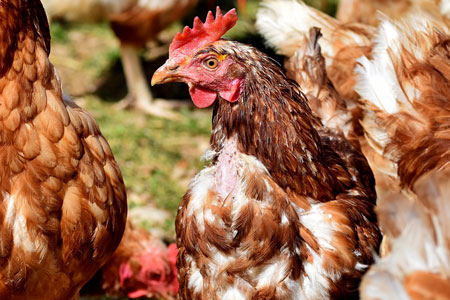
Finding a lot of feathers in your chicken yard is a sign that the birds are molting and will soon be developing healthy coats of fresh new feathers. This annual loss and regeneration of feathers is completely normal and is not an indication of disease. So let’s examine the question why does chicken defrost?
What is molting
Six to 8 percent of a chicken’s weight is plumage. A chicken’s feathers maintain body heat during the winter. They also protect the skin from sunburn during the summer, protect the skin from injury, and provide a certain degree of water resistance. Over time, feathers wear and tear.
Chickens lose and replace their feathers nearly every year, starting at about 18 months of age and usually during late summer or early fall. Shorter days indicate that it is time to renew plumage in preparation for the cold weather.
This process, called molting, usually occurs gradually over a period of 8 to 16 weeks. When the chicken thaws, it doesn’t look completely naked, or at least it doesn’t usually.
The best layers fall late and fast. The poorer layers start earlier and melt slowly, taking up to 6 months to complete molting.
Out of season molt
A brood hen is moulted out of season after a batch of eggs have hatched. This is completely normal.
Otherwise, out-of-season molt usually results from stress, such as a cold snap or going without water or feed. Other causes include poor diet or mite infestation. Molting due to stress is usually rapid and partial and, unlike complete molt, does not always cause reduced egg laying.
very juvenile
Young chicks begin to replace their downy down with feathers at 6 to 8 days of age. By the time they fully molt, they go through a partial moult as the young roosters develop their tail, saddle and tail feathers. Some breeds, especially the fancy show models, do not develop their distinctive plumage patterns until this point.
Exact environment temperature influences when chicken shed growth. The colder the temperature, the faster the feathers will grow.
Keeping the brood temperature on the cool side of comfort aids rapid plumage growth. Failure to properly reduce the temperature as the birds grow will delay full feathering.
Broken and missing feathers
Feathers are made of keratin, the same material that makes up chicken nails, as well as human nails and hair. But unlike nails and hair, feathers do not need trimming because they do not continue to grow.
A fully formed feather stops growing, its blood supply is cut off, and no further growth occurs. The feather is basically dying. So the broken feather remains broken until the next molt.
On the other hand, if a hen loses an entire feather, that spot will start growing a new feather immediately. The feather will not remain lost until the next feather is dropped.
This is one of the reasons why flight feathers are clipped, rather than pulled out, when we want to prevent chickens from flying. Another reason is that feather plucking can damage the feather follicle. The cut wing feathers will properly grow back at the next molting.
And that’s today’s news from Cackle Coop.
Gail Damero is the author of Storey’s Guide to Raising Chicken.
